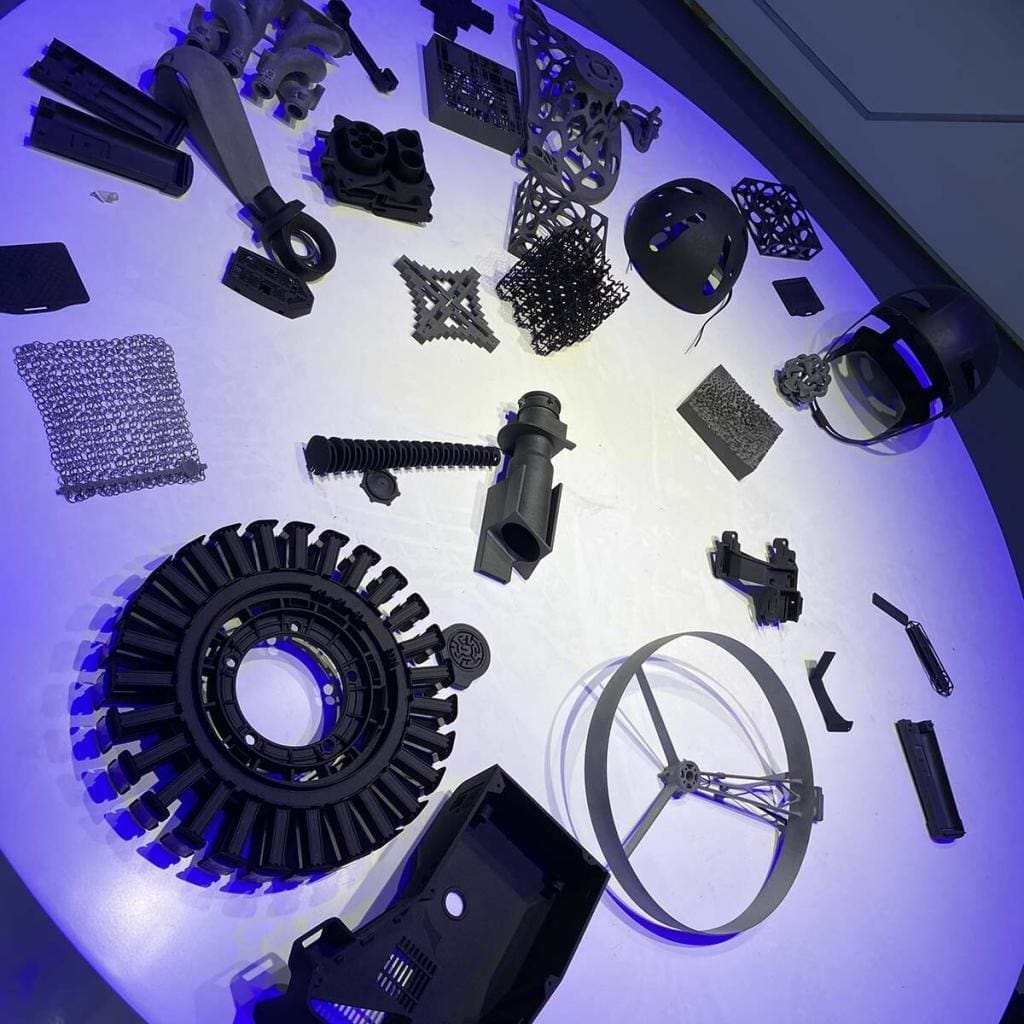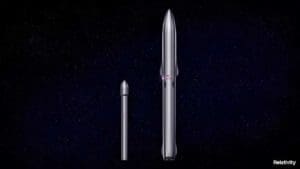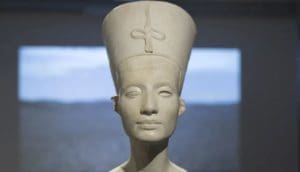Additive manufacturing has "penetrated" into all walks of life, and it has brought new production modes to traditional industries, and the music industry may be the next direction to be changed.Although it's not the first time we've seen 3D printing have a significant impact on an area, in this particular area of music, 3D printing technology can not only change and optimize the manufacturing process of Musical Instruments or artworks, but also add value to it, especially in terms of improving the accessibility of music.In addition, it has other applications, such as recreating past instruments, helping people in need and making the industry more sustainable.
But can 3D-printed Musical Instruments be used?Has the design and customization of music products really improved?Do musicians have a new, valuable tool for planning their future?In order to understand the true impact of additive manufacturing technology on the music industry, this article explores the different applications of 3D printing in the music industry.

A sustainable path to 3D printing in the music industry
3D printing is known for its incredible ability to increase the efficiency of production processes, as it allows users to digitally design a product and then build it in a precise manner.Thanks to this process, it becomes easier to design a prototype and understand how it will look in the final stages of development, thus accurately testing what needs to be built in a less costly and more efficient way, while also eliminating the waste that traditional methods can cause.
In the music sector in particular, 3D printing has great potential to contribute to a more sustainable world.We can see this potential both in manufacturing itself and in the fact that these technologies are being used to solve some of the problems in the industry.For example, if we talk about products such as vinyl, they are not entirely sustainable because they are made from polyvinyl chloride (PVC), a non-biodegradable plastic material that causes air pollution when burned.In addition, much of the production of vinyl records takes place in other countries, where supply issues have been created due to the pandemic.

In this context, 3D printing can use more environmentally friendly materials to manufacture Musical Instruments, audio components and vinyl records.By using additive manufacturing, reliance on non-biodegradable plastic materials can be reduced and more environmentally friendly options explored.An example of this can be seen in the work of Green Vinyl Records, a Dutch company dedicated to producing more sustainable vinyl records.Green Vinyl Records does not use traditional plastic, but instead uses eco-friendly materials to make records with the same quality and sound as ever.In addition, they claim that their manufacturing process saves 60% in energy consumption and speeds up production time.
In addition, in the world of music, we see how artists, musicians and engineers can join forces to create amazing sustainable products.The "Greenaxe" electric guitar made by OlafDiegel is the embodiment of this movement.Using recycled sawdust, wood adhesives and a 3D printer, Diegel has managed to reduce overall manufacturing costs.The result is beautiful handmade guitars made from recycled materials, making music more affordable and accessible without relying on unsustainable processes.

△
Olaf Diggle"Greenaxe" electric guitar made by Olaf Diggle (image source:
Olaf Diggle )
Martin Juarez Brizzi, CEO of Fona, a 3D printed musical instrument company, explains: "The main advantages that 3D printing brings are simpler manufacturing processes and reduced costs.If we compare a traditional piano machine to our digital one, all the modifications we make to the instrument must first be designed through a 3D modeling program.Here you can explore artistic and/or functional options, plan instruments, assemble materials, etc."
Production of Musical Instruments using 3D printing
3D printing also plays an important role in the way musicians market their products.3D technology enables the manufacture of customized, exclusive products, opening up new opportunities for artists and musicians to create unique and compelling products for their fans.Whether it's replicating hard-to-find vintage instruments played at concerts or creating new designs for merchandise designs, 3D printing has become an easier and more cost-effective route to the production of music products.However, when the worlds of technology and art come together, there is usually some discord.More traditional musicians and instrument designers believe that 3D-printed instruments cannot produce as good a sound, while others believe that the technology can enable more precise and simpler designs, resulting in higher quality instruments.
Nonetheless, there is no denying that 3D printing has revolutionized the way Musical Instruments are made and obtained, becoming a valuable tool in this regard.By using specific materials and techniques, it is possible to create Musical Instruments with specific sound and physical properties that were not previously possible using traditional production techniques.3d printing technology-has also freed up the use of Musical Instruments, making them more accessible and affordable for musicians around the world.This is particularly beneficial for communities with limited access to instruments.Musicians can now obtain custom instruments that suit their specific needs and preferences, rather than having to rely on the limited supply in the market, or even make their own from online platforms such as Thingiverse or MyMiniFactory .

3D printing can also combine elements from different existing instruments to create new ones.This led to the creation of hybrid instruments with unique sound and physical properties.This is because it provides greater freedom in exploring new instrument concepts and creating custom instruments that suit the individual needs of musicians.In addition, combining different elements of existing instruments can also lead to new ways of creating music."The most interesting thing about digital manufacturing is not the fact that all the components are replaced with 3D printing, but rather the combination of 3D printing with existing methods that could potentially impact productivity, expand the customizability of the instrument, give it more artistic or functional arguments," Brizzi extended.
Techniques and materials for 3D printing instruments
As for 3D printed Musical Instruments, it is also important to understand the materials they are made of, as they use a variety of different materials.For example, polylactic acid (PLA), acrylonitrile butadiene styrene (ABS), polycarbonate (PC), polyetherimide (ULTEM), acrylonitrile styrene acrylate (ASA), and polyethylene terephthalate (PETG) are all commonly found in the production of plastic structural devices.In addition, they can be made from powders and filamentous resins or even nylon.In addition to the polymer materials mentioned earlier, metal powders can also be used to make Musical Instruments.
In general, the use of these materials (polymers and metals) will depend on the manufacturer's goals when making the instrument.For example, in order to improve the overall strength of 3D printed Musical Instruments, they are usually reinforced with short or continuous fibers and made of these composite materials.After that, obviously post-treatment can be applied to achieve the desired surface finish.Maxime Carron, co-founder of Syos (creator of 3D printed cigarette holders), said: "From the beginning, we used FDM (fused deposition modeling) to manufacture Syos cigarette holders.Our conditions are very demanding, especially because the musician has to put the product in his mouth.We had a French company develop a material specifically tailored to our needs."
If we talk about the technology to make them, we can find the right technology for each material and instrument.For example, if we are talking about a ukulele made from ABS, it will most likely be made using FFF 3D printing.But on the other hand, if we're talking about 3D printed horns, it's more likely to use powdered metals and technologies like DMLS, SLS, or EBM.

△Odisei-uses 3D printing to make Musical Instruments: small, lightweight saxophones
(Image source: OdiseiMusic)
The Catalan company Odisei Music is dedicated to the design and manufacture of 3D printed electronic wind instruments, most notably its electronic saxophone.Called Travel Saz, in production process ,it uses multi-jet fusion ( Multi Jet Fusion )technology.The goal is to showcase the technical potential of the industry by helping musicians use their musical skills in a faster and easier way to spread music around the world.
RamónMañas of OdiseiMusic explains: "We used an-Multi Jet Fusion-printer from HP to manufacture the 3D printed saxophone.This machine allows us to manufacture final parts with very good aesthetics and mechanical finish.We also use this technology because of its high yield.We believe it is the best fit for our needs for the type of product we design and manufacture."
Access to music through new technologies
It seems that 3D printing does have a role to play in helping musicians, as Frank DeFalco, manager of Canada Makes, an organization dedicated to 3D printing, commented in an interview with Design Engineering:"3D printed instruments are not necessarily better, it just offers a novel way to make them."In addition, this new method can help meet the musician's instrument needs in most cases."
Robert Hunter, an engineering doctoral student at the University of Ottawa, has used 3D printing to design a clarinet and wristband that together help musicians support the weight of the instrument for hours.Inspired by his own experience playing the clarinet in high school, he felt severe pain in his thumb tendon after practicing for hours.

The blind community has also found a way to read music through the 3D-printed staff project for blind people, led by Kim Yeaji and a team of researchers at the University of Wisconsin.Kim experienced gradual loss of vision and found a way to connect with the world in music.One engineer involved in the project noted: "It's not just about building a prototype for her or the music school.It was a real collaboration where we worked with Kim to understand her needs and find a solution."
The project, called "Tactile Staff," aims to recreate paper music scores using unique bumps that can not only be read but also recognized by the sense of touch, somewhat similar to Braille.To achieve this, very sophisticated 3D printing technology is required, so they used-selective laser sintering(SLS), This allows for better resolution and allows notes to be copied into distinct little bumps.
Carron continued: "There is still a long way to go to make music more accessible, and new technologies such as 3D printing can help spark the interest of tech enthusiasts.Music still has a very traditional image, at least in France.The use of color and unusual materials, as well as the breaking of rules, can also generate some form of appeal through the novelty it brings to an aging and very old market.At any rate, this is what we hope for at Syos!"While there is still work to be done, 3D printing is the perfect tool to advance the accessibility of the music industry.
Acoustics and production processes
As we can see, in addition to instrument manufacturing, 3D printing has also improved accessibility to music for different types of users.Especially for those who are unfortunate enough to have difficulty enjoying it in many ways.In addition, 3D printing can produce acoustic components faster and more efficiently, which reduces the production cost of sound equipment and increases efficiency.This, in turn, improves the ability of engineers and designers to test and validate their projects prior to mass production, thus improving the accuracy and quality of production.
In addition to these incredible applications, music is said to be an important player in the fight against memory-related diseases in old age.3D printing has also contributed to this, as we can see on this phonograph called the "Amnesia Music Box."It is 3D printed from bamboo and can be made at home.Its main goal is to bring the joy of music to people suffering from memory loss, such as dementia or Alzheimer's disease.

All in all, it's no secret that 3D printing has had a huge positive impact on many industries.Among them we can certainly include music, because using 3D printers to create Musical Instruments, etc., is both good for the environment and good for all of us, and will certainly continue in the future.This process can start with changing the materials used and reducing waste, as well as actively listening to those in need.Perhaps at some point we will have access to sustainably sourced vinyl that can be printed ourselves in record stores.Or maybe we can go to an instrument store that can customize our instruments to our specific needs.
Source: 南極熊










